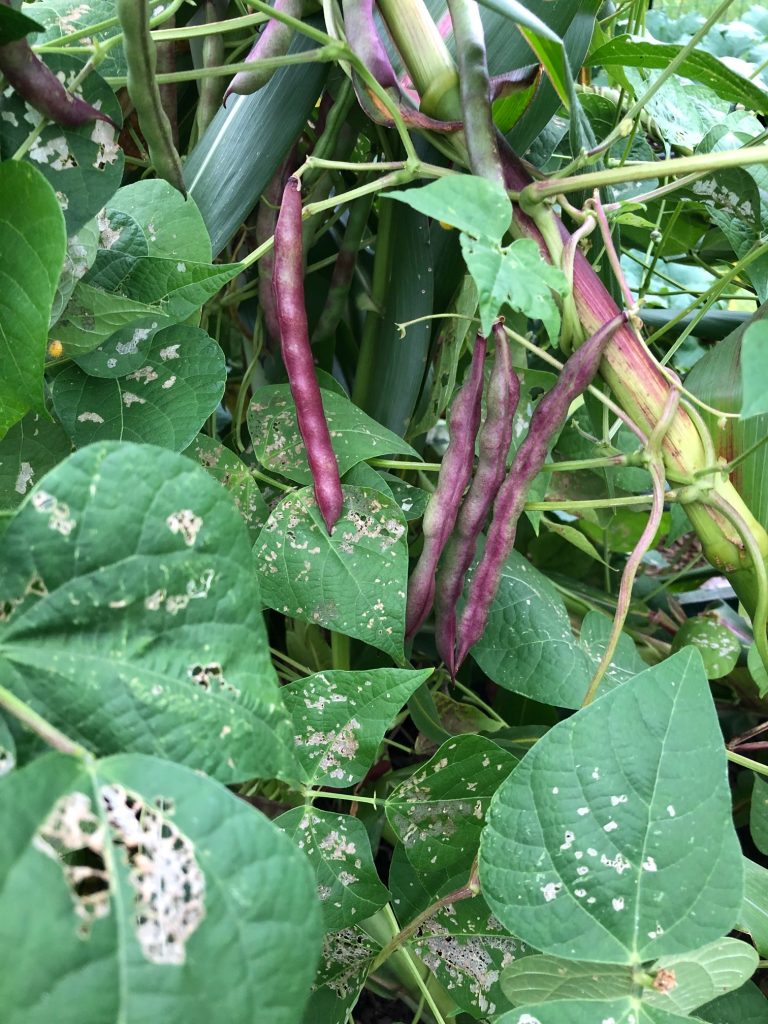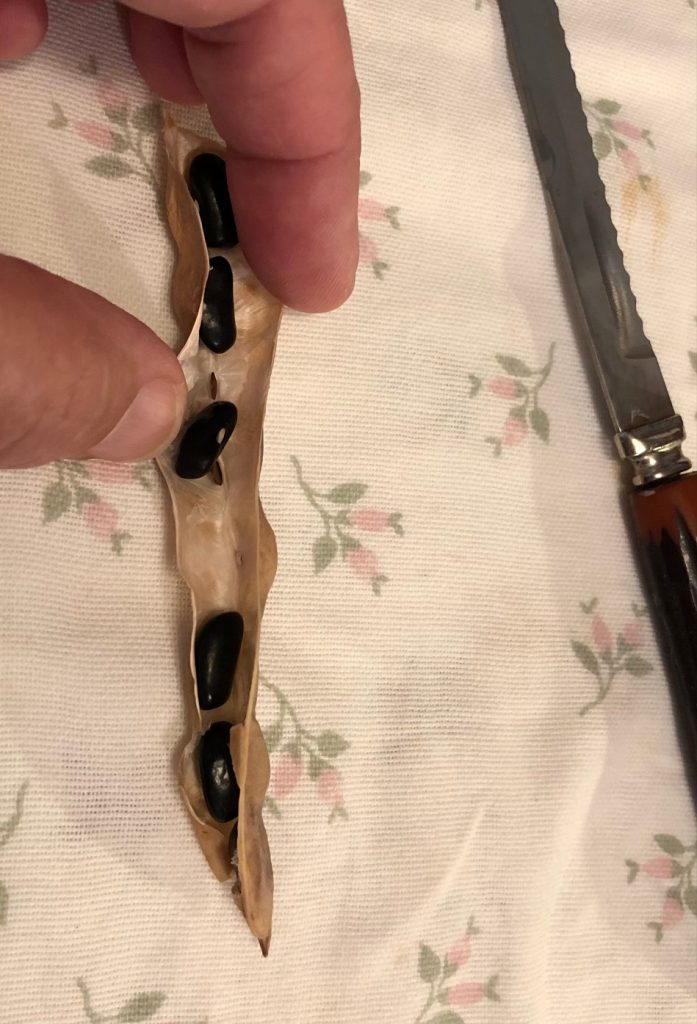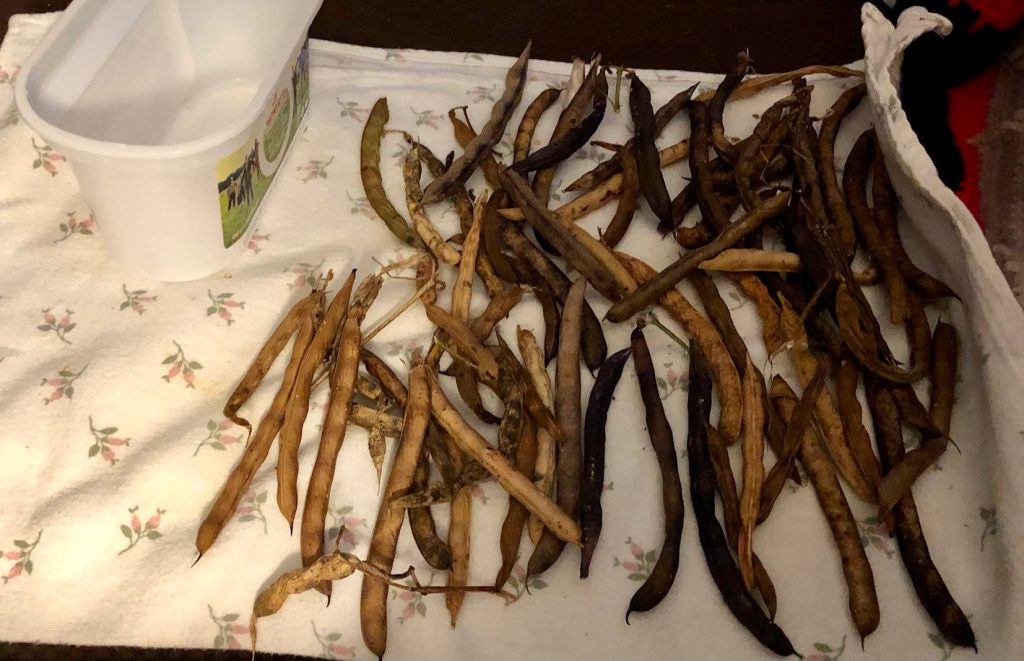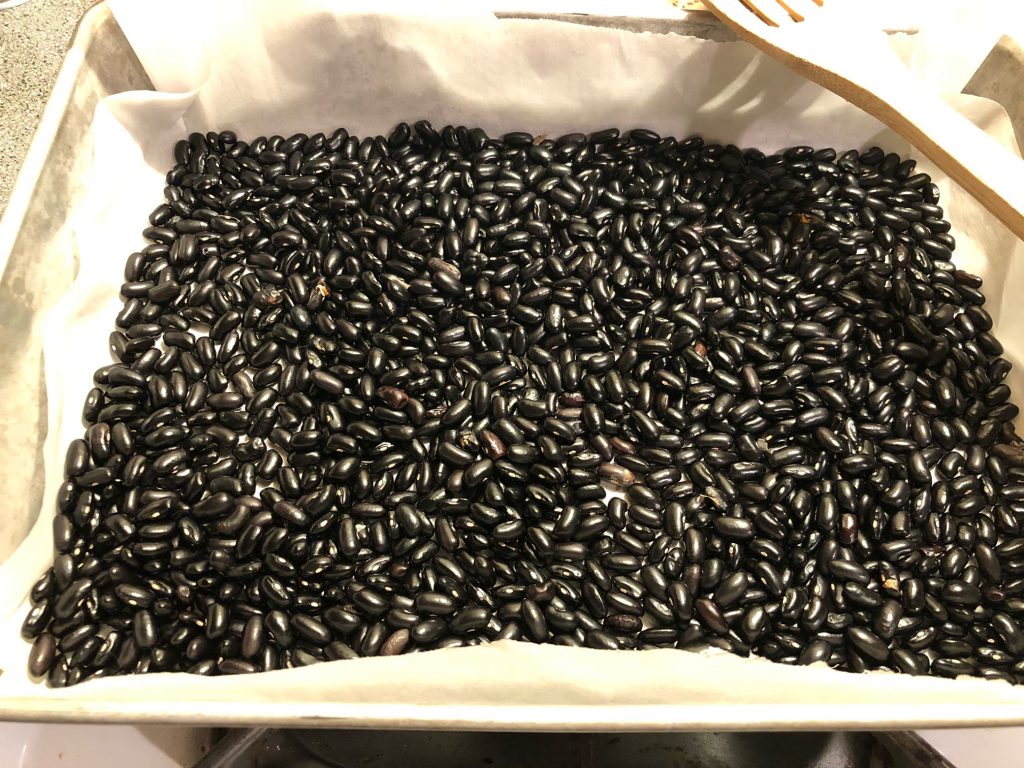
Remember last year when I tried a plot of “Three Sisters” in my pandemic survival garden?
Well I did it again this year, except this time instead of pole-type green beans I used a traditional heirloom black bean variety called “Cherokee Trail of Tears”.
You may recall that the Three Sisters were called such by Indigenous Tribes in the Americas because the three crops – corn, beans, and squash – were grown together in the same plot and were co-dependent in their growth habits.
But modern researchers also discovered that eating these three together in the diet provided the right amino acids for complete proteins and sufficient nutrition to sustain a prehistoric tribe. That right there is good survival garden information, folks.
Given all that, I decided to try my hand at black beans this year because 1) they were traditional, 2) we eat a lot of black beans at my house, and 3) being a novice gardener I hadn’t yet tried growing shell/dry beans.
I planted in late May and now that it’s almost October the pods have been drying and I’m starting to harvest. I am tickled pink at my success! It was basically plant them and walk away (except for a ”minor” detail I’ll mention in a bit).
As a novice, it was interesting to me to watch the bean progression through the growing season. The bean vines grew up and were supported by the cornstalks as expected. Then the pods gradually went from green (like regular green pole beans) to purple pods to dry papery pods with black beans inside. As the pods turned papery I slowly harvested them and let them dry further inside the house.



After I was sure they were sufficiently dry not to mold, I shelled the pods and then dried/pasteurized the beans in the oven at about 160-200F for thirty minutes. This step was per directions from the NCHFP for dry beans. Apparently this step not only dries the beans further for storage, it also kills any insect larvae that may hatch in storage and destroy your hard work. (Ewww)

That all sounds easy and good, right? Except there was a fly in the ointment. Technically a beetle – “Mexican Bean Beetles” to be precise.
I didn’t have much of a garden pest problem last year except for the squash bugs, so my beans went totally unmolested. But this year was a different story. What I initially thought were beneficial ladybugs turned out to be invasive and hungry Mexican bean beetles instead. My delay in identification cost my plant production significantly. The bean plant leaves were slowly skeletonized, starting with the green beans and then moving over to the black bean plot. I still ended up with a harvest, but I need to do some reading to see if there are any non-pesticide ways to reduce the issues for next year.
I kept the squash bugs under control this year by diligently picking them off and drowning them in soapy water – adults and egg masses alike – as soon as the first signs appeared. I did that morning and night for months. It was labor-intensive but I didn’t get too much damage in reward for my efforts. I’d like to hope that the same thing would work for the bean beetles, but we’ll see. I just hate to use pesticides if I can get away without it.
Despite the pest problem, these beans are definitely a keeper for next year, and since they are an heirloom variety I never have to buy seeds for them again!
So now that my black beans are ready and my mashed pumpkin is in the freezer, I’m going to try grinding a little of my dried sweet corn into corn meal and making a dish with my three sisters harvest!
This recipe sounds delicious! But I also want to play with one of my own. I can hardly wait!.



